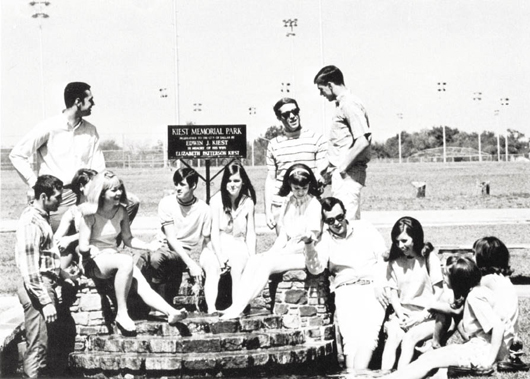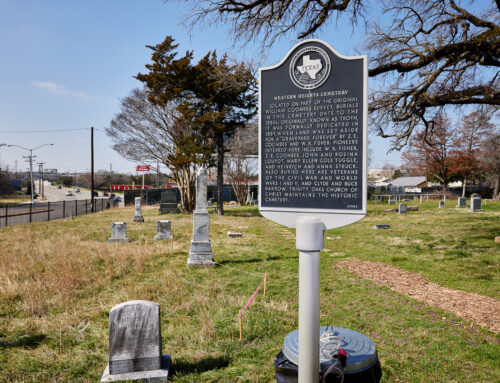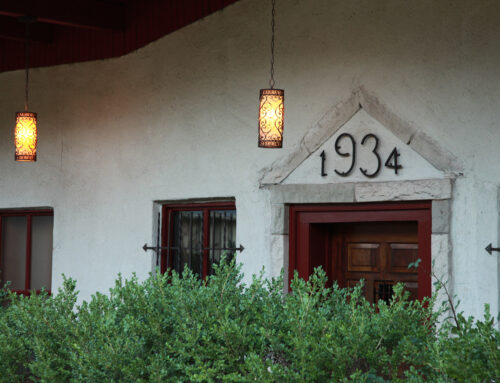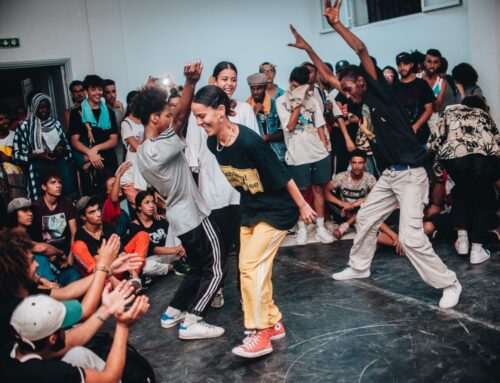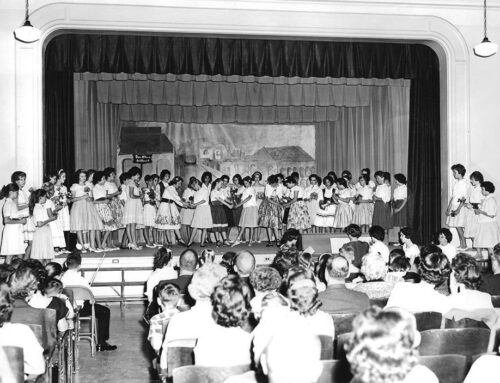The wide expanse of Kiest Park has beckoned us for decades.
Since 1931 this 247 acre park has hosted everything from fireworks on the fourth to cruising after class.
In memory of his wife, Elizabeth, Edwin J. Kiest, publisher of the Dallas Times Herald, bequeathed 247 acres to the City of Dallas in 1931. It was, and still is, the largest donation ever of property designated for a Dallas City park. It became Oak Cliff’s Kiest Park.
During the Depression, WPA construction projects contributed a mortared, brown field stone pavilion, matching stone entries, and a similarly constructed pergola (now gone) that enhanced the rock fountain and water rill. The field house — the scene for parties, dances and community events, hosted years of Adamson and Sunset high school student dances, some with live music and some using records. Early provisions also included bridle paths and stables for equestrians, and a beautifully landscaped garden.
Both area residents and public schools used the park’s tennis courts while the ball diamonds hosted thousands of baseball and softball games through the decades. Oak Cliff church league teams swelled the ball fields, with stands filled with cheering fans. The playground with its merry-go-round, seesaws, teeter-totters and large swingset area has been a longtime favorite spot for children and their parents, while winter snowfalls provided Cliffites with a huge expanse for cold weather fun.
Beginning in the 1950s, the Oak Cliff Jaycees held the annual Oak Cliff Fourth of July celebration at the park. Living only one street away, I would walk there with my friend (by ourselves and with no parents in tow) to spend the entire day. All we needed were tickets, which were free, and entitled us to complimentary barbecue sandwiches and cold drinks. There were celebrities, politicians, beauty contests, cotton candy, small amusements and clowns. What else could a kid want?
Families and friends ate and visited, soldiering on through the all the activities and the blazing Texas heat to stay for the event’s finale: the fireworks show.
Sitting on blankets and lawn chairs, on-site spectators watched the blasting, popping and soaring pyrotechnic display. Other viewers, parked along the park’s perimeters, sat on car hoods or leaned out windows, while in neighboring subdivisions, residents gathered in their own yards to observe. The most memorable event? The year when all the fireworks went off at the same time. What a show!
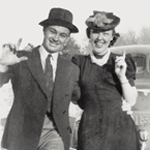 One notable 1950s Saturday morning activity at Kiest concerned the flying of gasoline-powered model airplanes. These miniature flying machines floated around in circles, connected to a tether, held on the opposite end by the plane’s owner. Because this was before the days of air-conditioning, the airplanes’ loud buzzing sounds made sleeping in on Saturdays almost impossible for those in the peripheral neighborhoods who left their windows open for the cool night breeze.
One notable 1950s Saturday morning activity at Kiest concerned the flying of gasoline-powered model airplanes. These miniature flying machines floated around in circles, connected to a tether, held on the opposite end by the plane’s owner. Because this was before the days of air-conditioning, the airplanes’ loud buzzing sounds made sleeping in on Saturdays almost impossible for those in the peripheral neighborhoods who left their windows open for the cool night breeze.
In August 1990 the unofficial Stevie Ray Vaughan candlelight memorial was held at the park. (The organizers have asked me to express their belated but sincere apologies to the City of Dallas, for not knowing about that pesky, but required, permit for such activities. Sorry, folks.)
However, the one ritual going on at Kiest for generations?
Cruising.
Cruising Kiest began as soon as Kiest Park was, well … cruisable. In the 1930s high-schoolers and young adults would pop some petrol in their tanks, pick up their best gal, and head for Kiest Park. Their destination: the inner circle road. Their purpose: cruising.
Driving around the now blocked-off circle, waving at friends, and stopping for conversations, well, it was the thing to do. In the ’40s, same thing. In the ’50s, same thing. And so on, and so on.
There were some differences between the decades, however.
The ’30s cruisers didn’t casually throw on a pair of jeans, a T-shirt and a pair of athletic shoes. Definitely not. Instead, everyone dressed up, and we’re not talking about a pair of dressy jeans and a “nice” top. It was a sports coat and tie for the guys and dresses/skirts for the gals. Naturally, the girls stepped out in nylons and heels, while the boys wore lace-up dress shoes. And both genders donned hats.
Yes, you heard right — hats. No cruisin’ in tank tops, flip-flops or Daisy Dukes in those days.
I drove through the park recently, reminiscing and taking in the sights. The place is different in some respects, but all not that different. Just like our grandparents and parents and ourselves, there were cruisers still cruisin’. Some things never change.

